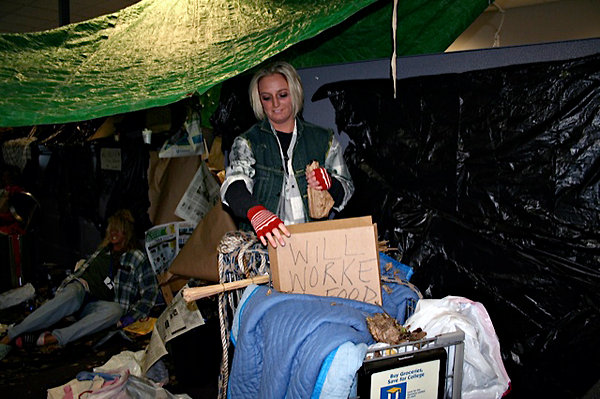In Menashe v. Baum, the U.S. District Court, Eastern District of New York allowed Plaintiff's individual Fair Debt Collection Practices Act claim to go forward against Defendant Steven J. Baum, Esq. based on Baum's alleged attempt to collect legal fees from a previously dismissed 2008 Foreclosure in a 2010 Foreclosure Action.
Cite as: Menashe v. Baum, 10-CV-5155 (JS)(ARL), NYLJ 1202517559128, at *1 (EDNY, Decided September 28, 2011)
District Judge Joanna Seybert
Decided: September 28, 2011
ATTORNEYS
For Plaintiff: Randall S. Newman, Esq., New York, NY
For Defendant: Brett A. Scher, Esq., Yale Pollack, Esq., Kaufman Dolowich Voluck & Gonzo LLP, Woodbury, NY
MEMORANDUM & ORDER
*1Plaintiff Jacob Menashe ("Plaintiff") brought this putative class action against Defendant Steven J. Baum, Esq. ("Defendant") under the Fair Debt Collection Practices Act, 15 U.S.C. 1692 et seq. (the "FDCPA") and New York's General Business Law Section 349 ("GBL 349"). Pending before the Court is Defendant's motion to dismiss the Complaint for failure to state a claim. For the following reasons, this motion is GRANTED IN PART.
*2
BACKGROUND
Plaintiff defaulted on his home mortgage in 2008. His lender, LaSalle Bank National Association ("LaSalle"), initiated foreclosure proceedings in Nassau County Supreme Court (the "2008 Foreclosure"). (Compl. ¶17.) That action was dismissed in September 2009 because LaSalle failed to give Plaintiff proper notice prior to accelerating the outstanding debt. (Id. ¶18, Ex. A.) Shortly thereafter, Plaintiff defaulted again, and LaSalle initiated a second foreclosure action on January 5, 2010 (the "2010 Foreclosure"). (Id. ¶19.) A mandatory settlement conference was scheduled pursuant to N.Y. C.P.L.R. 3408 ("CPLR 3408") and the New York Uniform Civil Rules for the Supreme and County Courts 202.12-a ("Uniform Rule 202.12-a"). The conference was held on May 6, 2010, but Plaintiff did not attend. (Def. Opp. 2-3.)
Defendant represented LaSalle in both foreclosure proceedings. (Compl. ¶¶17, 19.) On July 8, 2010, Defendant sent Plaintiff a letter stating the payoff amount necessary to reinstate Plaintiff's mortgage. (Id. ¶22.) Plaintiff's loan and mortgage agreement authorized LaSalle to recover the legal fees it reasonably expended in the event of Plaintiff's Default,1 *3 and the payoff letter included an entry for $350 with the description "LEGAL FEES — SETTLEMENT CONFERENCE" (Compl. ¶23). The letter also included entries for $420 for "INDEX NUMBER FEE"; $3,050 for "LEGAL FEES — MOTION PRACTICE"; and $190 for "REQUEST FOR JUDICIAL INTERVENTION FEE." (Id. ¶25.) These items are related to the 2008 Foreclosure that was dismissed. (Id. ¶4.)
Defendant's attempt to recover its fees for the settlement conference is at the heart of this case. To put this dispute in context, the Court first discusses CPLR 3408 and Uniform Rule 202.12-a. CPLR 3408 was enacted in August 2008. In its original form, the provision required courts presiding over foreclosures involving subprime or nontraditional mortgages to hold a settlement conference. (See Brett A. Scher Declaration ("Scher Decl.") Ex. F.) Also in 2008, New York's Chief Administrative Judge enacted Uniform Rule 202.12-a to give effect to CPLR 3408. As with CPLR 3408, the original version of the Uniform Rule required courts to schedule settlement *4 conferences. The Uniform Rule also provided in part that "[t]his section shall be applicable to residential mortgage foreclosure action brought on or after September 1, 2008." Uniform Rule 202.12-a (2008 version).
New York State's Legislature later broadened CPLR 3408 to include actions involving "any residential foreclosure action involving a home loan." N.Y.C.P.L.R. 3408 (McKinney 2011). At the same time, the legislature added what the Court will refer to as the "Attorneys' Fees Provision": "A party to a foreclosure action may not charge, impose, or otherwise require payment from the other party for any cost, including but not limited to attorneys' fees, for appearance at or participation in the settlement conference." Id. In relevant part, the legislative history indicates that the amendments "shall take effect on the sixtieth day" after they are passed and "shall apply to legal actions filed on or after such date." Laws 2009, ch. 507, §25, sub e, eff. Feb 13, 2010; 2009 N.Y. ALS 507; 2009 N.Y. 507; 2009 N.Y.S.N. 7. The amendments were passed on December 15, 2009; thus, they took effect and apply to foreclosure actions commenced on or after February 13, 2010. See 2009 N.Y. A.L.S. 507, 2009 N.Y. LAWS 507, 2009 N.Y. S.N. 7.
Following the amendments to CPLR 3408, the Chief Administrative Judge amended Uniform Rule 202.12-a. Substantively, the changes largely tracked the amendments to *5 CPLR 3408, and the amended Uniform Rule also took effect on February 13, 2010. The amended Uniform Rule also changed its "applicability" section in the following manner (deletions are bracketed, additions are underlined):
(a) Applicability. This section shall be applicable to residential mortgage foreclosure actions [brought on or after September 1, 2008, involving one- to four-family dwellings owned and occupied by the defendant where the underlying loan is highcost, subprime or nontraditional, as defined in section 6-1 of the Banking Law and section 1304.5(c) and (e) of the Real Property Actions and Proceedings Law, and was entered into between January 1, 2003 and September 1, 2008] involving a home loan secured by a mortgage on a one- to four- family dwelling or condominium, in which the defendant is a resident of the property subject to foreclosure.
(Newman Decl. Ex. D.)
DISCUSSION
The thrust of Plaintiff's case is that the amended Uniform Rule 202.12-a prohibiting lenders from recovering attorneys' fees for the mandatory settlement conferences applies retroactively to the 2010 Foreclosure, which was filed on January 5, 2010. (See Compl. ¶29.) Following this logic, Defendant's payoff letter, which included settlement conference legal fees in the payoff total, arguably constituted a FDCPA violation. For the reasons that follow, the Court rejects *6 Plaintiff's strained attempt to apply the amended Uniform Rule 202.12-a to his 2010 Foreclosure. His individual claim that Defendant violated the FDCPA by attempting to collect legal fees related to the 2008 Foreclosure may go forward.
To survive a Rule 12(b)(6) motion, a plaintiff must plead sufficient factual allegations in the complaint to "state a claim [for] relief that is plausible on its face." Bell Atlantic Corp. v. Twombly, 550 U.S. 544, 570, 127 S. Ct. 1955, 1974, 167 L. Ed. 2d 929, 949 (2007). The complaint does not need "detailed factual allegations," but it demands "more than labels and conclusions, and a formulaic recitation of the elements of a cause of action will not do." Id. at 555. In addition, the facts pleaded in the complaint "must be enough to raise a right to relief above the speculative level." Id. Determining whether a plaintiff has met his burden is "a context-specific task that requires the reviewing court to draw on its judicial experience and common sense." Harris v. Mills, 572 F.3d 66, 72 (2d Cir. 2009). On a motion to dismiss, a plaintiff gets the benefit of all reasonable inferences, see, e.g., Litwin v. Blackstone Group, L.P., 634 F.3d 706, 711 n.5 (2d Cir. 2011), but "[t]hreadbare recitals of the elements of a cause of action, supported by mere conclusory statements, do not suffice." Ashcroft v. Iqbal, __ U.S. __, 129 S. Ct. 1937, 1949, 173 L. Ed. 2d 868 (2009).
*7
I. The Amended Uniform Rule does not Apply Retroactively
Plaintiff alleges that Defendant violated the FDCPA by (1) attempting to collect amounts not permitted by law (15 U.S.C. §1692f(1)); (2) using unfair and unconscionable collection methods (15 U.S.C. §1692f); (3) giving false impression of the character, amount or legal status of the alleged debt (15 U.S.C. §1692e(2)); (4) using false or deceptive collection methods (15 U.S.C. §1692e(5)); and (5) making threats to take action which cannot legally be taken. (Compl. ¶29.) Plaintiff's case rests on the theory that, notwithstanding the New York State Legislature's clear edict that CPLR 3408's "Attorneys' Fee Provision" amendment applies only to foreclosures commenced on or after February 13, 2010, the amended Uniform Rule applies retroactively and covers his January 5, 2010 foreclosure action. In Plaintiff's view, the amended Uniform Rule, which does not specify an effective date, renders the legal fee included in the payoff letter an amount prohibited by law.
Plaintiff concedes, as he must, that the amended CPLR 3408 only applies to foreclosures brought on or after February 13, 2010 (see Def. Opp. 9), but he argues that the Chief Administrative Judge made the proscription on settlement conference legal fees retroactive when she amended the Uniform Rule after the legislature amended CPLR 3408. Plaintiff's two *8 main arguments are first, that by deleting the "brought on or after" language from the original Uniform Rule, the Chief Administrative Judge "obviously intended" the amended Uniform Rule to apply retroactively (Def. Opp. 9) and second, that the amended Uniform Rule is a type of remedial or procedural rule that is normally given retroactive effect (id.). The Court rejects both arguments. Statutes are generally presumed to apply prospectively, see, e.g., Majewski v. Broadalbin-Perth Cent. Sch. Dist., 91 N.Y.2d 577, 584, 696 N.E.2d 978, 673 N.Y.S.2d 966 (1998), and if the Chief Administrative Judge wanted to make the amended Uniform Rule retroactive in spite of the Legislature's clear contrary intent, she would have said so explicitly. This is particularly true where, as here, the Legislature postponed the effective date of amended CPLR 3408. See O'Connor v. Long Island R.R., 406 N.Y.S.2d 502, 503 (2d Dep't 1978) (explaining that the presumption against retroactivity is strongest where Legislature has postponed the effective date). More to the point, though, is that the Chief Administrative Judge lacked the authority to make the Attorneys' Fees Provision retroactive. "The sources of judicial rule making authority…do not afford carte blanche to courts in promulgating regulations and no court rule can enlarge or abridge rights conferred by statute." LaSalle Bank, NA v. Pace, 31 Misc. 3d 627, 633-34, 919 N.Y.S.2d 794, 801 (N.Y. Sup. Ct. *9 2011). In sum, there is no indication that the Chief Administrative Judge's silence as to the amended Uniform Rule's effective date was an attempt to override the Legislature's clear intent that the "Attorneys' Fee Provision" applies only to foreclosures filed on or before February 13, 2010.
For a related reason, the Court reject's Plaintiff's argument that the amended Uniform Rule should be given retroactive effect because it is remedial or procedural. Even if the amended Uniform Rule were a remedial or procedural provision, the Chief Administrative Judge lacked the authority to override the Legislature's clear intent and any contrary, judge-created rule would be invalid. See LaSalle, 919 N.Y.S.2d at 801 ("Since rule making authority cannot significantly affect the legal relationship between litigating parties, the imposition of additional matters that impair statutory remedies or enlarge or abridge rights conferred by statute are not the proper subjects of rules promulgated by court administrators.").
Accordingly, Plaintiff's FDCPA claim arising out of Defendant's attempt to collect legal fees for the settlement conference is dismissed. Similarly, Plaintiff's GBL 349 claim, which is premised on his argument that amended Uniform Rule 202.12-a applies retroactively, must also be dismissed, a point Plaintiff concedes. (Pl. Opp. 11.)
*10
II. Plaintiff's Remaining FDCPA Claim
Plaintiff also alleges that Defendant violated the FDCPA by including legal fees from the 2008 Foreclosure in the 2010 payoff letter. To state an FDCPA claim, Plaintiff must allege that "(1) [he] has been the object of collection activity arising from consumer debt, (2) the defendant is a debt collector as defined by the FDCPA, and (3) the defendant has engaged in an act or omission prohibited by the FDCPA." Ogbon v. Beneficial Credit Servs., Inc., 2011 WL 347222, at *4 (S.D.N.Y. Feb. 1, 2011) (quoting Carrington v. Chrysler Fin., No. 10-CV-1024, 2010 WL 1371664 (E.D.N.Y. Apr. 5, 2010)). The FDCP prohibits "false, deceptive, or misleading representation or means in connection with the collection of any debt" including, without limitation, the "false representation of…the character, amount, or legal status of any debt." 15 U.S.C. §1692e(2)(A). Here, Plaintiff claims that Defendant (1) is a debt collector within the meaning of the FDCPA (Compl. ¶7), (2) sent a payoff letter as an attempt to collect Plaintiff's mortgage debt (see id. ¶¶15, 22-25), and (3) falsely represented that Plaintiff owed certain legal fees in connection with the 2008 Foreclosure proceeding, which was dismissed in Plaintiff's favor after the lender could not establish Plaintiff's default (id.). These allegations are sufficient to state an FDCPA claim.
*11
CONCLUSION
For the foregoing reasons, Defendant's motion to dismiss is GRANTED IN PART AND DENIED IN PART. Specifically, Plaintiff's FDCPA and GBL 349 claims arising out of Defendant's attempt to collect legal fees for the mandatory settlement conference, including his class action allegations, are DISMISSED with prejudice. Plaintiff's individual FDCPA claim based on Defendant's alleged attempt to collect legal fees from the 2008 Foreclosure may go forward.
SO ORDERED.
1. Section 7(E) of the Adjustable Rate Note provides that, upon the borrower's default, the lender "will have the right to be paid back by [the borrower] for all of [the lender's] costs and expenses in enforcing th[e] Note to the extent not prohibited by applicable law. Those expenses include, for example, reasonable attorneys' fees." (Def. Ex. C.) Also, the Consolidated Mortgage includes two sections addressing the collection of fees in the instance of a default: Section 14 provides that the "Lender may charge [the borrower] fees for services performed in connection with [a] default…including, but not limited to, attorneys' fees," and Section 22 states that "[i]n any lawsuit for Foreclosure and Sale, Lender will have the right to collect all costs and disbursements and additional allowances allowed by Applicable Law, and will have the right to add all reasonable attorneys' fees to the amount [borrower] owe[s] to Lender." Id.












